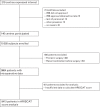Epidemiology, practice of ventilation and outcome for patients at increased risk of postoperative pulmonary complications: LAS VEGAS - an observational study in 29 countries
- PMID: 28633157
- PMCID: PMC5502122
- DOI: 10.1097/EJA.0000000000000646
Epidemiology, practice of ventilation and outcome for patients at increased risk of postoperative pulmonary complications: LAS VEGAS - an observational study in 29 countries
Abstract
Background: Limited information exists about the epidemiology and outcome of surgical patients at increased risk of postoperative pulmonary complications (PPCs), and how intraoperative ventilation was managed in these patients.
Objectives: To determine the incidence of surgical patients at increased risk of PPCs, and to compare the intraoperative ventilation management and postoperative outcomes with patients at low risk of PPCs.
Design: This was a prospective international 1-week observational study using the 'Assess Respiratory Risk in Surgical Patients in Catalonia risk score' (ARISCAT score) for PPC for risk stratification.
Patients and setting: Adult patients requiring intraoperative ventilation during general anaesthesia for surgery in 146 hospitals across 29 countries.
Main outcome measures: The primary outcome was the incidence of patients at increased risk of PPCs based on the ARISCAT score. Secondary outcomes included intraoperative ventilatory management and clinical outcomes.
Results: A total of 9864 patients fulfilled the inclusion criteria. The incidence of patients at increased risk was 28.4%. The most frequently chosen tidal volume (VT) size was 500 ml, or 7 to 9 ml kg predicted body weight, slightly lower in patients at increased risk of PPCs. Levels of positive end-expiratory pressure (PEEP) were slightly higher in patients at increased risk of PPCs, with 14.3% receiving more than 5 cmH2O PEEP compared with 7.6% in patients at low risk of PPCs (P < 0.001). Patients with a predicted preoperative increased risk of PPCs developed PPCs more frequently: 19 versus 7%, relative risk (RR) 3.16 (95% confidence interval 2.76 to 3.61), P < 0.001) and had longer hospital stays. The only ventilatory factor associated with the occurrence of PPCs was the peak pressure.
Conclusion: The incidence of patients with a predicted increased risk of PPCs is high. A large proportion of patients receive high VT and low PEEP levels. PPCs occur frequently in patients at increased risk, with worse clinical outcome.
Trial registration: The study was registered at Clinicaltrials.gov, number NCT01601223.
Figures





Comment in
-
Postoperative pulmonary complications - Still room for improvement.Eur J Anaesthesiol. 2017 Aug;34(8):489-491. doi: 10.1097/EJA.0000000000000659. Eur J Anaesthesiol. 2017. PMID: 28682814 No abstract available.
References
-
- Slutsky AS, Ranieri VM. Ventilator-induced lung injury. N Engl J Med 2013; 369:2126–2136. - PubMed
-
- Putensen C, Theuerkauf N, Zinserling J, et al. Meta-analysis: ventilation strategies and outcomes of the acute respiratory distress syndrome and acute lung injury. Ann Intern Med 2009; 151:566–576. - PubMed
-
- Serpa Neto A, Nagtzaam L, Schultz MJ. Ventilation with lower tidal volumes for critically ill patients without the acute respiratory distress syndrome: a systematic translational review and meta-analysis. Curr Opin Crit Care 2014; 20:25–32. - PubMed
-
- Serpa Neto A, Simonis FD, Barbas CS, et al. Association between tidal volume size, duration of ventilation, and sedation needs in patients without acute respiratory distress syndrome: an individual patient data meta-analysis. Intensive Care Med 2014; 40:950–957. - PubMed
-
- Briel M, Meade M, Mercat A, et al. Higher vs lower positive end-expiratory pressure in patients with acute lung injury and acute respiratory distress syndrome: systematic review and meta-analysis. JAMA 2010; 303:865–873. - PubMed
Publication types
MeSH terms
Associated data
Grants and funding
LinkOut - more resources
Full Text Sources
Other Literature Sources
Medical

